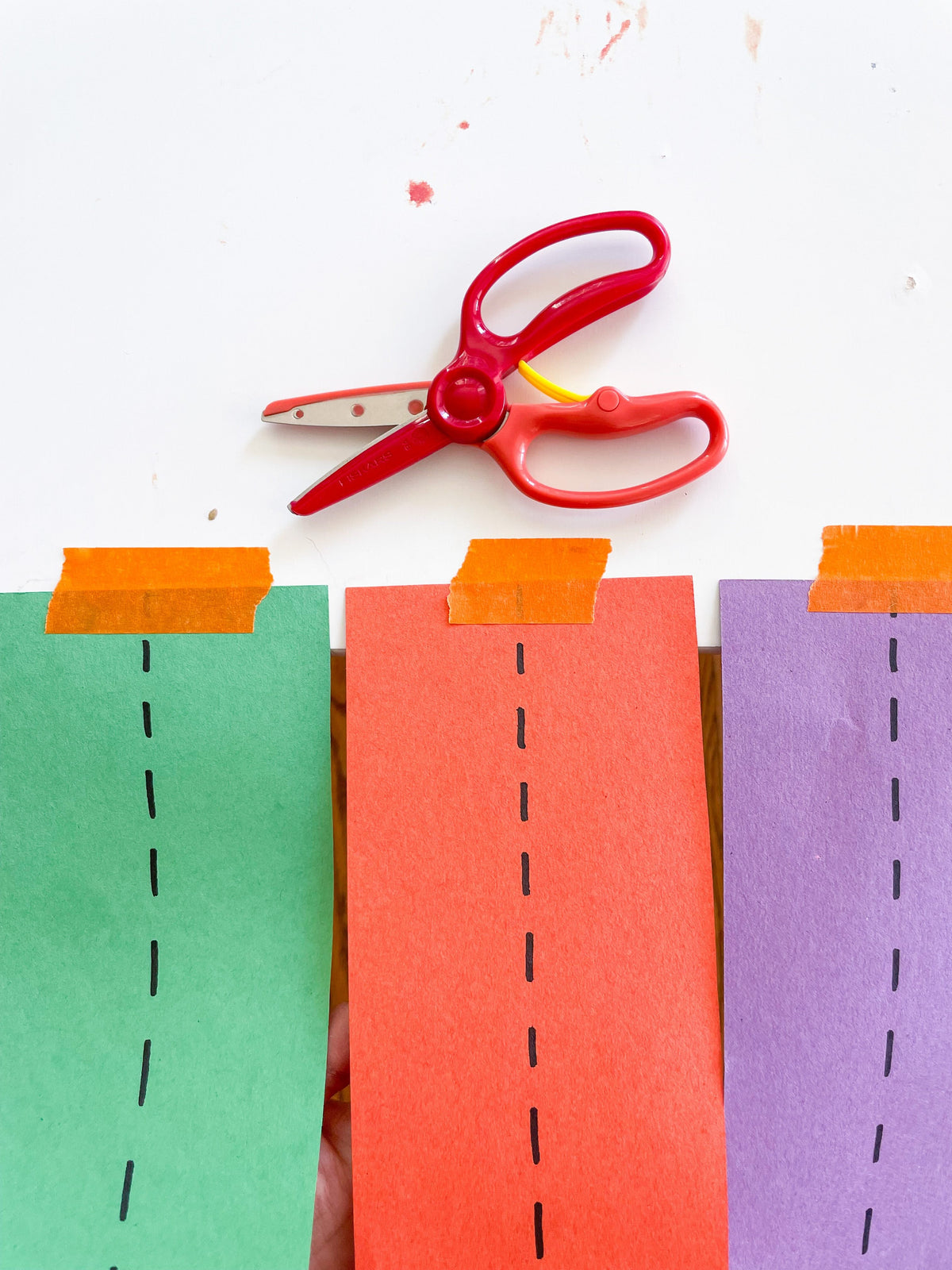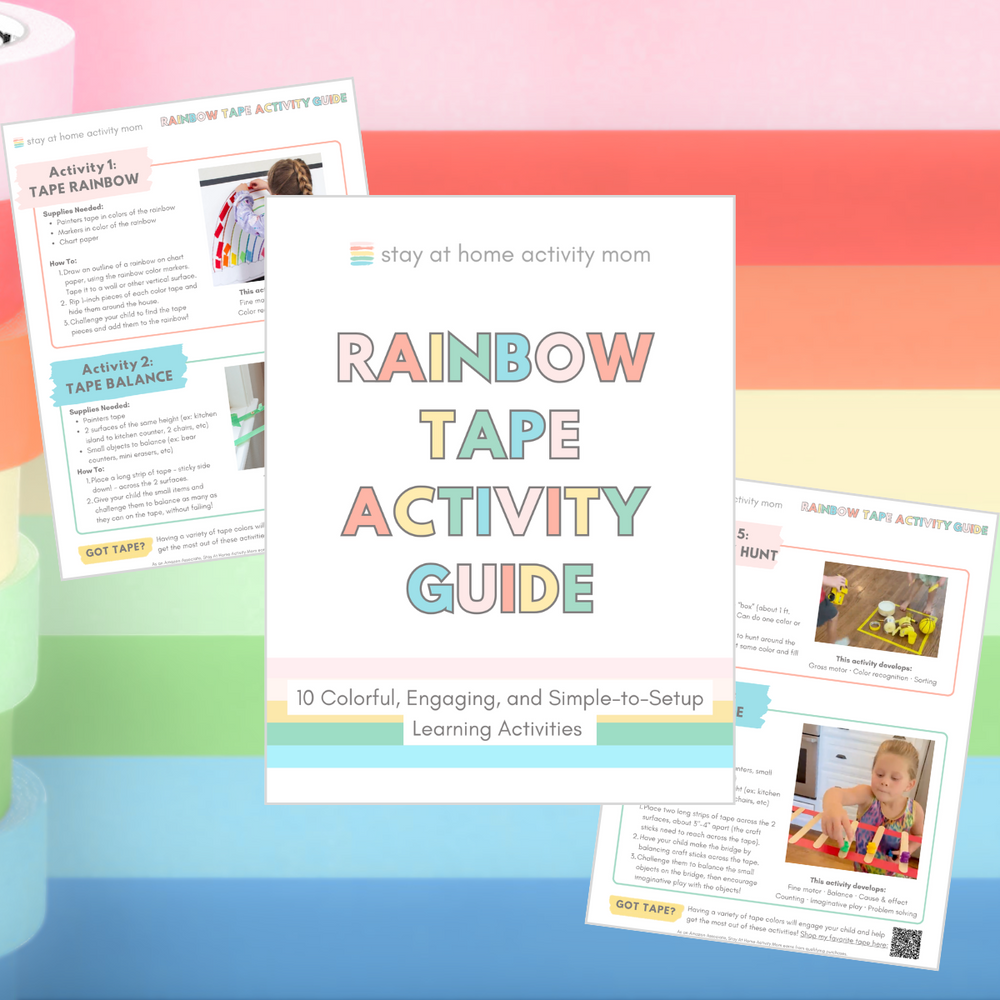

Build School-Ready Hand Strength and Scissor Skills with Simple Cutting Practice Activities
Back-to-school is around the corner, and so many parents would love to help their child get ready for the classroom but in a fun and engaging way! These cutting practice activities use everyday household items and safe materials to build essential cutting coordination. These simple activities are the perfect way to offer hands-on activities this summer while building a strong foundation for classroom readiness.
Why These Cutting Practice Skills Make a Difference
Boost Your Child's Classroom Confidence with Cutting Practice
Here's something every parent needs to know about back-to-school preparation: being able to use scissors properly is actually one of the most important skills your child will need in school! When your little one can confidently cut paper, follow lines, and handle scissors safely, they feel capable and independent during classroom activities. These cutting practice sessions aren't just about cutting - they're building the exact hand strength and coordination your child needs for everything from art projects to following multi-step directions when school begins .
Why Starting Early Makes Such a Difference
I'll let you in on something that kindergarten teachers notice immediately: kids who arrive with solid cutting practice experience have an easier time with pretty much every hands-on classroom activity. It's not about creating tiny perfectionists - it's about building confidence with tools so when your child faces their first classroom art project, they can focus on creativity instead of struggling with basic cutting. When you include cutting practice in your back-to-school prep, you're building your child's classroom independence one snip at a time.
Making Cutting Practice Fun (Because It Should Be!)
The best part about cutting practice is that it naturally appeals to kids' love of cause-and-effect and immediate results. These cutting practice activities are perfectly designed for back-to-school prep because they combine skill building with the kind of hands-on exploration that makes learning feel like play.
What You'll Need for these Cutting Practice Activities
- Child safety scissors (blunt-tipped, appropriate for age)
- Training scissors with spring-loaded handles for beginners
- Different paper types (construction paper, newspaper, magazines, junk mail)
- Cardstock or cereal boxes for firmer cutting practice
- Play-Doh or clay for three-dimensional cutting
- Paper plates and cups for circular cutting challenges
- Straws and pipe cleaners for fine motor cutting
- Tape and stickers for decoration and creative time after cutting
20+ Age-Specific Cutting Practice Activities
Toddlers (Ages 2-3): Introduction to Scissors
Cutting practice for toddlers can mean focusing on basic introduction to scissors and safety awareness. At this age, you're building foundational skills that will make future cutting much easier!
- Paper Tearing: Before introducing scissors, let your toddler practice tearing paper to build hand strength. Show them how to hold paper with both hands and pull in opposite directions. This develops the bilateral coordination they'll need for cutting later.
- First Scissors: Start with spring-loaded scissors that open automatically after each cut. Place your hand over theirs to guide the cutting motion through materials like cardstock (since it's a bit thicker than regular paper, you don't get the "bend" when the scissors aren't properly positioned - it just simply won't cut through!). Let them experience the satisfying "crunch" of cutting through it!
- Sensory Cutting Fun: Try cutting Play-Doh! You can make play dough "snakes" by roll the dough into long "snakes" then letting your toddler cut them into pieces. The resistance of the dough builds hand strength!
- Random Cutting Bin: Give them scraps of construction paper and let them make random cuts anywhere on the paper. There's no right or wrong way - this is purely about building experience and comfort with the cutting motion.
The development goals at this stage should focus on establishing safety rules, building hand strength through preliminary tearing and gripping, and developing bilateral coordination by using both hands together.
Preschoolers (Ages 3-4): Basic Cutting Skills
This age group can take on more independent cutting practice as their hand strength and coordination develop and improve.
- Magazine Treasure Hunting: Hand your preschooler old magazines or catalogs and let them cut out pictures of things they like. They don't need to cut perfectly around the edges - just getting the general shape builds confidence. You can sort the pictures into categories like animals, food, or toys for extra learning.
- Fringe Cutting Magic: Draw lines about an inch apart along one edge of construction paper. Show your child how to cut along each line without cutting all the way through to the other side. This creates paper "fringe" and teaches them to control how far they cut.
- Simple Strip Cutting: Draw lines across a piece of paper and have your child cut along them to create strips. Start with wider strips and gradually make them narrower as their skills improve. These strips can become paper chains, bookmarks, or craft materials.
- Play-Doh Pizza Party: Flatten Play-Doh into "pizzas" and let your child cut them into slices. They can cut pretend vegetables for toppings too. The three-dimensional cutting builds different muscles than paper cutting - plus you get some great creative and imaginative play in there too!
- Straw Sorting: Give your child drinking straws to cut into small pieces. They can sort the pieces by size, count them, or use them for threading activities. The small motor control required for cutting straws builds precision.
- Junk Mail Freedom: Set up a basket of junk mail and let your preschooler go wild cutting it up!
Enhanced skills development at this stage includes improved hand coordination for smoother cutting motions, better spatial awareness understanding where to cut, and increased attention span for longer cutting projects.
Pre-K (Ages 4-5): Advanced Cutting Skills
Cutting practice for pre-kindergarteners emphasizes independence and developing precision to prepare for classroom expectations.
- Shape Detective: Draw simple shapes like circles, squares, and triangles on paper and challenge your child to cut them out. Start with larger shapes and gradually make them smaller. Don't worry about perfection - the goal is following a general outline.
- Curve Cutting Challenges: Create gentle curved lines for your child to follow with scissors. You can draw waves, hills, or simple spiral shapes. Cutting curves requires more advanced coordination than straight lines.
- Paper Plate Creations: Paper plates are perfect for circular cutting practice. Your child can cut around the rim to create scalloped edges, cut spiral shapes starting from the outside edge, or cut the plate into pizza slice shapes for pretend play.
- Cardboard Engineering: Save cereal boxes and let your child cut them into building materials. The resistance of cardboard builds significant hand strength.
- Precision Projects: Try cutting along dotted lines you've drawn, cutting specific numbers of items (like "cut five strips"), or cutting materials for a specific craft project. This builds the kind of precision they'll need for school assignments.
- Multi-Step Creations: Plan cutting projects that require several steps, like cutting shapes, decorating them, and assembling them into a collage or mobile. This builds planning skills and sustained attention.
For this age - as your child prepares for kindergarten - the focus should include independence, following visual directions, time management, and clean-up skills.
Elementary School Readiness (Ages 5-6): Expert Level!
Cutting practice for children transitioning to elementary school focuses on efficiency and creativity.
- Detail Cutting Masters: Challenge your child to cut intricate shapes or follow complex lines. They can cut around the outline of pictures in magazines, creating detailed cutouts that require turning the paper and navigating corners.
- Speed and Accuracy Games: Time your child cutting simple shapes. Make it fun by seeing if they can cut five circles in two minutes, or race against their own previous times!
- Mixed Media Projects: Combine cutting different materials in one project - paper, fabric, foam, and even thin cardboard. Learning to adjust their technique for different materials builds versatility.
- Problem-Solving Cutting: Present cutting challenges like "How can you cut this paper so it becomes a chain?" or "Can you cut one long spiral from this circle?" These open-ended challenges build creative thinking.
- Real-World Applications: Include your child in actual household cutting tasks like opening packages, cutting open bags for food prep, or preparing craft supplies for family projects. This shows them how cutting skills apply to daily life!
Quick Cutting Practice Activities for Busy Days
Some summer days are jam packed, and that's okay! Here are super simple cutting practice activities that you can easily fit into a busy day:
2-Minute Activities:
- Give them one piece of junk mail to cut however they want
- Let them cut drinking straws into pieces
- Give them the cutting bin
5-Minute Projects:
- Cut shapes from construction paper
- Cut strips of paper for a quick paper chain
- Give them a magazine and a category (letters, animals, etc) and 5 minutes to cut out as many items from that category they can find
Cutting Practice Activities: Educational Benefits and Beyond!
Fine Motor Development
Cutting practice strengthens broader fine motor development skills that your child will need in the classroom:
- Hand strength development for writing and other tool use
- Bilateral coordination using both hands together effectively
- Visual-motor integration coordinating what their eyes see with their hand movements
- Finger dexterity for detailed tasks
Cognitive Growth
These cutting activities naturally promote cognitive development:
- Planning skills as they think ahead about cutting strategies
- Spatial awareness through understanding how to cut out shapes and lines without cutting through other shapes on a page
- Following directions by completing cutting tasks according to instructions
- Problem-solving and adapting when cuts don't go as expected
Creative Expression and Confidence
Cutting practice builds creative confidence:
- Artistic expression expands as they test out new mediums and techniques
- Independence and confidence in using tools without adult help
- Risk assessment learning to try new techniques safely
Your Turn to Play!
Cutting practice is about building the hand strength, coordination, and confidence your child will need for countless classroom activities. The fact that you're thinking about this skill and wanting to support your child's development shows what a thoughtful parent you are! Start small, celebrate the messy attempts, and trust that every snip is building important muscles and skills for school success!
Disclaimer: This post may contain affiliate links. If you purchase through these links, I may earn a small commission at no additional cost to you. All recommendations are based on items I personally use and love with my own children.







